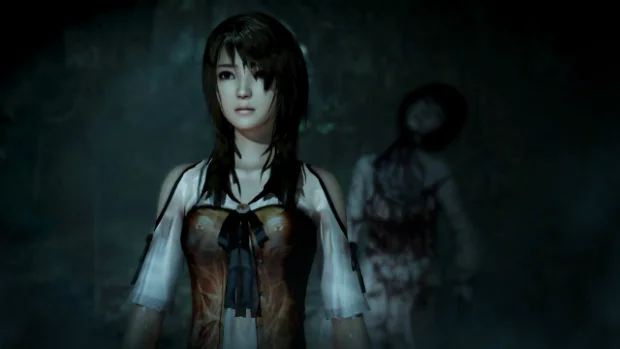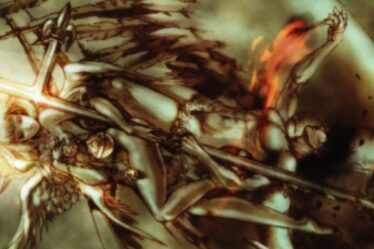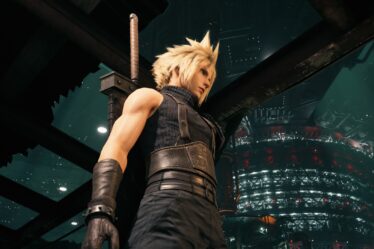
This article was originally published in Italian on GamesVillage.it in 2015.
When Project Zero (or Fatal Frame, as it’s known in the U.S.) made its debut in the vast library of exclusive titles for the Sony PlayStation 2, many survival horror fans were pleasantly surprised by the clever formula devised by the then-Tecmo. Riding the wave of Western fascination with Japanese horror films, the developers behind Dead or Alive and Ninja Gaiden brought the eerie atmosphere of classics like Ju-On (The Grudge), Ringu (The Ring), and similar films to the black monolith, blending them with esoteric influences and elements of that distinct historical folklore where Oni and ghosts play with the lives of priestesses with long, raven-black hair. Despite the series never achieving notable sales either in Japan or overseas, the captivating heroines and the original gameplay mechanics involving cameras with mysterious powers ensured the franchise a certain level of fame among fans of a genre previously dominated by giants like Resident Evil and Silent Hill.
With the arrival of the Nintendo Wii, the Kyoto-based company led by the late Satoru Iwata took an interest in the series, acquiring the rights and giving it a fresh start as an exclusive for their console. Various technical and bureaucratic issues, however, prevented the Western release of Project Zero 4, a small gem that remained a Japan-only exclusive, only playable in English in recent years thanks to the efforts of fans who created a fan translation. The last trace of Project Zero with a PAL logo on the cover dates back about three years ago, when a remake of the beloved second installment unexpectedly appeared on the European market as a Wii exclusive. This remake boasted all the features introduced in the fourth episode, a new graphical overhaul, and a reworked story aimed at appealing even to those who enjoyed the original release on Sony’s console.
And so, we arrive at today, with Maiden of Black Water, which drops the series’ numbering and presents itself as a true “Made in Nintendo” debut on a global scale. It was already evident that Koei Tecmo and Nintendo were somewhat uncertain about the series’ future after Project Zero 2: Wii Edition failed to release in America. Therefore, it comes as no surprise that our friends across the pond in Wisconsin are once again left with less favorable treatment, this time with the Wii U title only available in a digital edition.
When discussing how well the latest installment adheres to the series’ core spirit, many points could be raised, but to immediately reassure fans, I’ll just say: yes, those who loved Project Zero in the past can breathe a sigh of relief. The cast of characters once again features a wide array of beautiful Asian women—this time modeled after the protagonists of Dead or Alive! They are all marked by the characteristic calmness of someone who has never seen a ghost, yet remains utterly unfazed by its sudden appearance. Like the fourth episode, arguably the most daring and innovative in the franchise, this game returns to a multi-protagonist narrative where the paths and personal stories of several heroes intertwine in an episodic tale set against the backdrop of a mysterious mountain said to attract those seeking the peace of eternal rest.
This episodic structure lightens the tension of exploring decaying and eerie environments, but at the same time, slightly diminishes the horror tone of the adventure, especially when you realize that returning home always signals the end of a session. By anticipating the narrative rhythm, Project Zero: Maiden of Black Water makes a critical misstep. Even a well-designed and atmospheric setting can’t save it when you’re faced with a stale visual and narrative concept, especially for those who’ve experienced previous entries. It’s disheartening to say, but my impression is that if you’ve already played any installment in the series, you’ll easily predict when enemies will appear on screen. And in a game that relies on atmosphere and the sudden appearance of screaming ghosts in confined and treacherous spaces, predictability is definitely not an advantage.
Things are further complicated by the control system, which feels so clunky that it’s like steering a tank rather than guiding leggy heroines, and the camera mechanics, partially handed over to the underused Wii U GamePad’s gyroscope and partly to the right analog stick. On paper, it seems like a perfect fit for the GamePad’s potential, but the immersion is continuously disrupted by the protagonists’ lack of agility and the motion controls, which don’t always accurately reflect the player’s movements. Beyond combat, the GamePad is used for solving extremely simplistic environmental puzzles, which, abandoning the complexity of those seen in earlier episodes, now prefer to streamline events with clearly visible glowing indicators at all times and a map always available on the GamePad screen, greatly reducing exploration to a repetitive “follow the marker, fight the ghost” pattern. Even locating a key or vital item for solving a short puzzle leads directly to the map, where a large icon shows exactly where to use it.
I wish I could say that the feeling of being on a pre-determined haunted house ride is mitigated by other aspects, such as the revamped battle system that takes into account the GamePad’s tilt when taking photos, the ability to glimpse a defeated enemy’s tragic past by “touching” them, or the fact that characters can get their clothes soaked, which adds minor penalties (barely noticeable at normal difficulty) and a voyeuristic effect akin to an eroge from Illusion Soft. But honestly, I’d be lying. As a big fan of the series, what I felt playing Project Zero: Maiden of Black Water was a constant sense of déjà vu, where the few tangible gameplay innovations didn’t redefine the experience as I had hoped for this debut on Nintendo Wii U.
As for the technical aspects, they fare better. The game holds its own against most titles released on the Wii U in recent years, with the added bonus of excellent polygonal models for the female protagonists. It’s one of the few recent Japanese games where environmental detail hasn’t been sacrificed for the sake of character appeal, yet inexplicable slowdowns emerge, especially in the later stages when battles last longer and enemies become more numerous. On a brighter note, for the first time in the series’ Western history, you can choose the Japanese voice track, which is far superior to the mediocre, often out-of-sync English dub.
Upon completing the 14-chapter adventure, each lasting about an hour, you unlock various bonuses. In addition to aesthetic extras like costumes and accessories to dress up the heroes (sadly, no sexy costumes from the Japanese version), there are additional difficulty levels (much needed, given the lack of challenge on normal mode) and a bonus story featuring the violet-haired ninja from Dead or Alive, here trying to escape from ghosts while searching for a friend. But to say more would spoil things, and given the rather predictable narrative, I won’t add anything else. Just a heads-up: if you’re a fan of the series, expect some unexpected returns!
Project Zero: Maiden of Black Water” stays true to the series’ roots, offering fans of Japanese horror a familiar yet slightly flawed experience. The game’s eerie atmosphere and multi-character narrative create tension, but the episodic structure and predictable scares weaken the horror. While the use of the Wii U GamePad has potential, clunky controls and simplistic puzzles detract from immersion. The visual design excels, particularly with the detailed character models, but occasional slowdowns and limited innovation leave the game feeling stale. Despite some shortcomings, long-time fans will appreciate the return of this haunting franchise.


